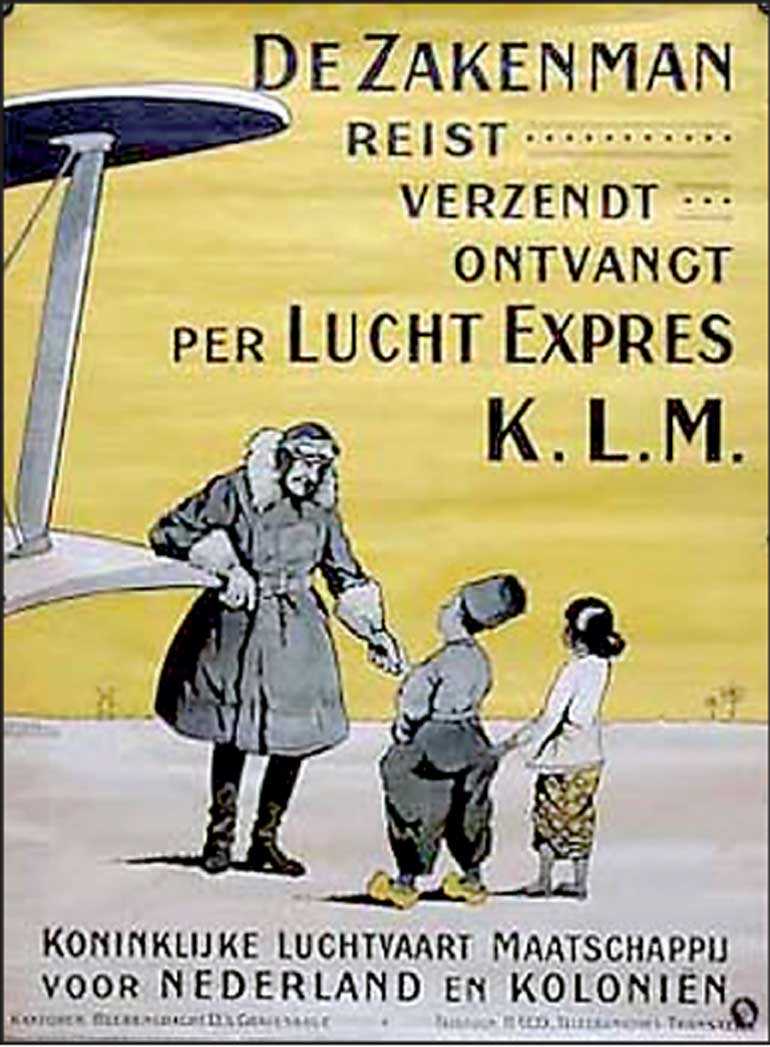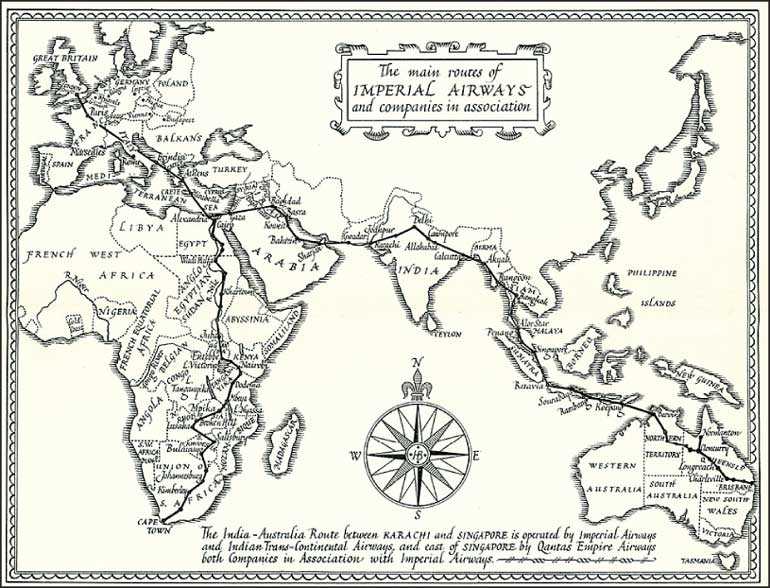Thursday Dec 11, 2025
Thursday Dec 11, 2025
Monday, 3 December 2018 00:27 - - {{hitsCtrl.values.hits}}
A KLM poster from the 1920s
The text translates as: 
The Businessman…..
Travels……
Sends…..
Receives
By Air Express KLM
Europe in the 1920s was still reeling from the devastation of the Great War. With their treasuries emptied, a whole generation of youth dead or wounded and societies in turmoil, the governments of the day turned to aviation to try resurrecting their fortunes.
Britain in particular was intent on continuing to secure its colonies and ensure that the wealth created there flowed back to London. The other European nations that had colonies also seized on an airline as a vital new means of communication with and control over far-flung outposts.
Entrepreneurs had formed many small companies and beginning in the early 1920s, governments began encouraging or forcing them to merge and form larger airlines. France took the lead with a number of smaller companies coming together and forming Air Union in 1923, which in turn merged with four other airlines to become Air France in 1933.
The Belgian Government encouraged the formation of an airline in 1919 named SNETA, which ceased operations and was replaced in 1923 by SABENA, which became the flag carrier of Belgium until its demise in 2001. As has been mentioned previously in these columns, KLM, which was also formed in 1919, is the world’s oldest airline to bear its original name.
Most of these airlines were formed, in part, to ensure rapid communication with the colonies of European powers in Africa and Asia. KLM’s route from Amsterdam to Batavia (now Jakarta) was the world’s longest scheduled flight until 1939.
In the boldest such step, in 1924 His Majesty’s Government of Great Britain encouraged the major of four smaller airlines to form Imperial Airways Ltd. in return for a £ 1 million subsidy over 10 years. This was to set the trend for state subsidies to airlines, an unfortunate habit that persists to this day in some parts of the world.
Imperial Airways, based in Croydon to the south of London, went on to become a trailblazer in many respects. The company pioneered long routes to far-flung corners of the British Empire, using land-based aircraft, flying boats and sometimes trains to link services by the two types. The continuous push for improvements led to many innovations, including the extensive use of flying boats, especially those produced by Short Brothers of Belfast, Northern Ireland.
‘Beyond the Blue Horizon’
‘Beyond the Blue Horizon’ by Alexander Frater is one of the many books that detail the achievements of this era. By the 1930s, Imperial Airways routes to Europe and the length of Africa to Cape Town were in place. Another eastbound route went first to Karachi (then part of India), then on to Calcutta. This was further extended to Rangoon, Singapore and, eventually, Brisbane, Australia in conjunction with a small Australian company, the Queensland and Northern Territory Aerial Services or QANTAS as it is known today.
Started in a small, dusty and still isolated town in Queensland, far inland from the more populated coast, QANTAS bears the distinction of being the world’s second oldest continuously operating airline to bear its original name.
From its small beginnings, today QANTAS has gone on to being one of the world’s more profitable airlines, with a fleet of over 280 aircraft and a dominant position in its home market.
Imperial Airways went on to become the British Overseas Airways Corporation (BOAC) and continued to be a pioneer in many aspects of the industry. Today it exists as British Airways, fully privatised and part of the International Airline Group and the One World alliance.
